This website uses cookies so that we can provide you with the best user experience possible. Cookie information is stored in your browser and performs functions such as recognising you when you return to our website and helping our team to understand which sections of the website you find most interesting and useful.
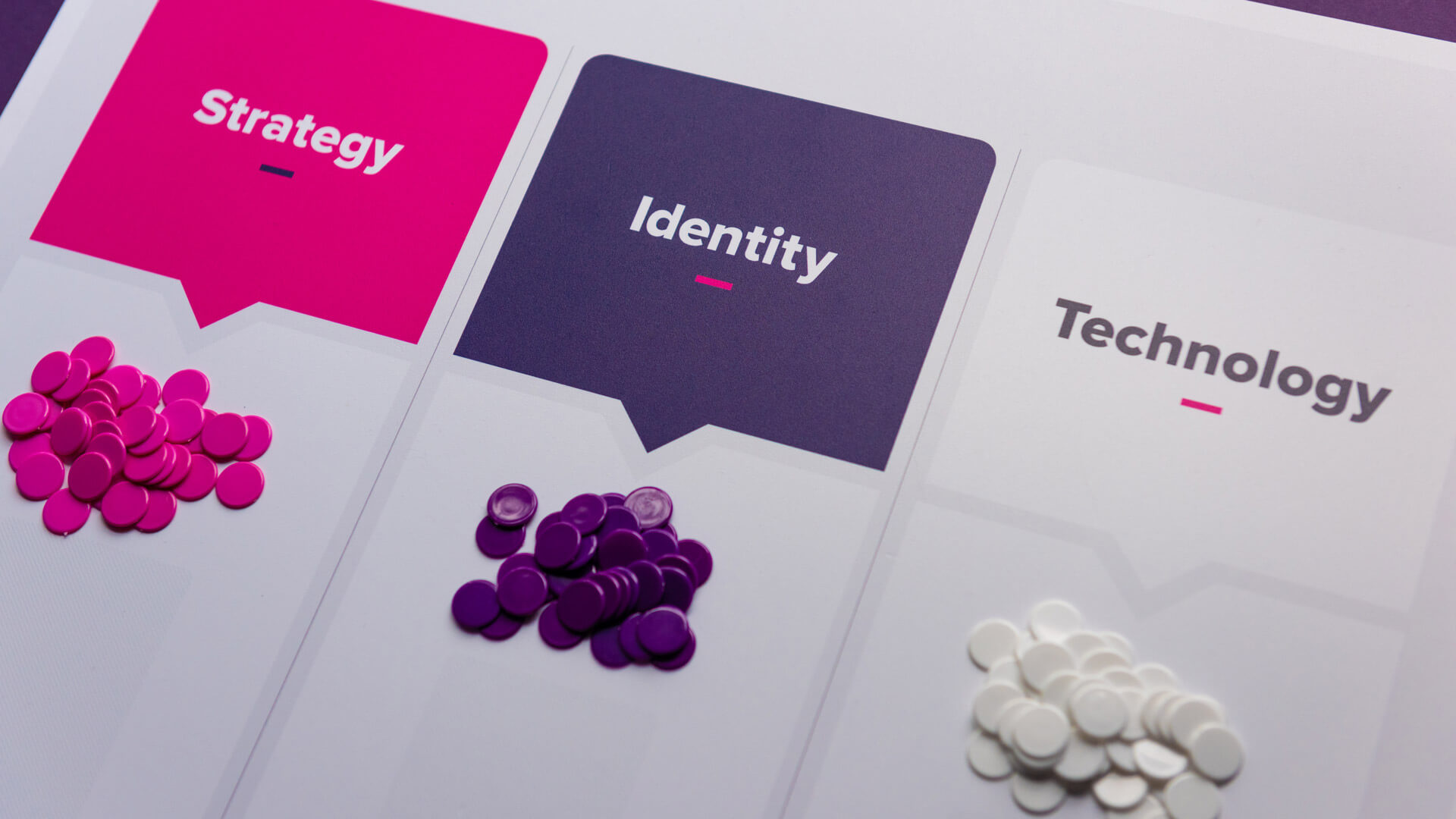
Developed through the requirement to bring structure and understanding to modern marketing, the S.I.T. model categorises techniques and opportunities under three headings. These are Strategy, Identity and Technology.
When combined effectively, S.I.T. guides our purpose and direction. It leads to creating stronger connections with audiences and also helps to define focus. The S.I.T model technique allows you to positively influence the direction of your business and set marketing priorities.
The S.I.T Model explained:
Strategy
Strategy gives direction and purpose. Starting by developing a strategy means we begin with what matters most. This has the greatest potential to create stronger, more authentic connections. Once developed, it naturally encourages you to break it down in order to form a plan.
Identity
When a strong direction is established, you can begin to build a relevant and strong brand. We use creativity to develop your authentic personality and tone of voice. Your identity then becomes the building block to make stronger connections.
Technology
Find the most appropriate and relevant channels to your audience. Be clear and brave enough to understand which channels to avoid by using intelligence-gathering software that detects the correct channels to truly enhance your brand.
“The medium is the message”
Marshall McLuhan
McLuhan’s quote is as relevant today as it was when it was first voiced in 1964. We now have even more channels to choose how our voice is heard and interpreted. The key to success is the volume of engagement and influence, rather than broadcasting huge volumes of shallow based content.
The key to success in using the S.I.T. model is that it forces clarity and marketing priorities.
Adopting the most appropriate channels for our audiences ensures that we start to see stronger connections. It is important we recognise that the channels we choose to communicate through (and avoid) will influence and shape our identity.
Expanding the S.I.T. model gives greater insight.
Over a number of months, we have been looking into what the key marketing priorities of organisations are. We began this process by initially evaluating what they believe to be their most important priority: Strategy, Identity or Technology.
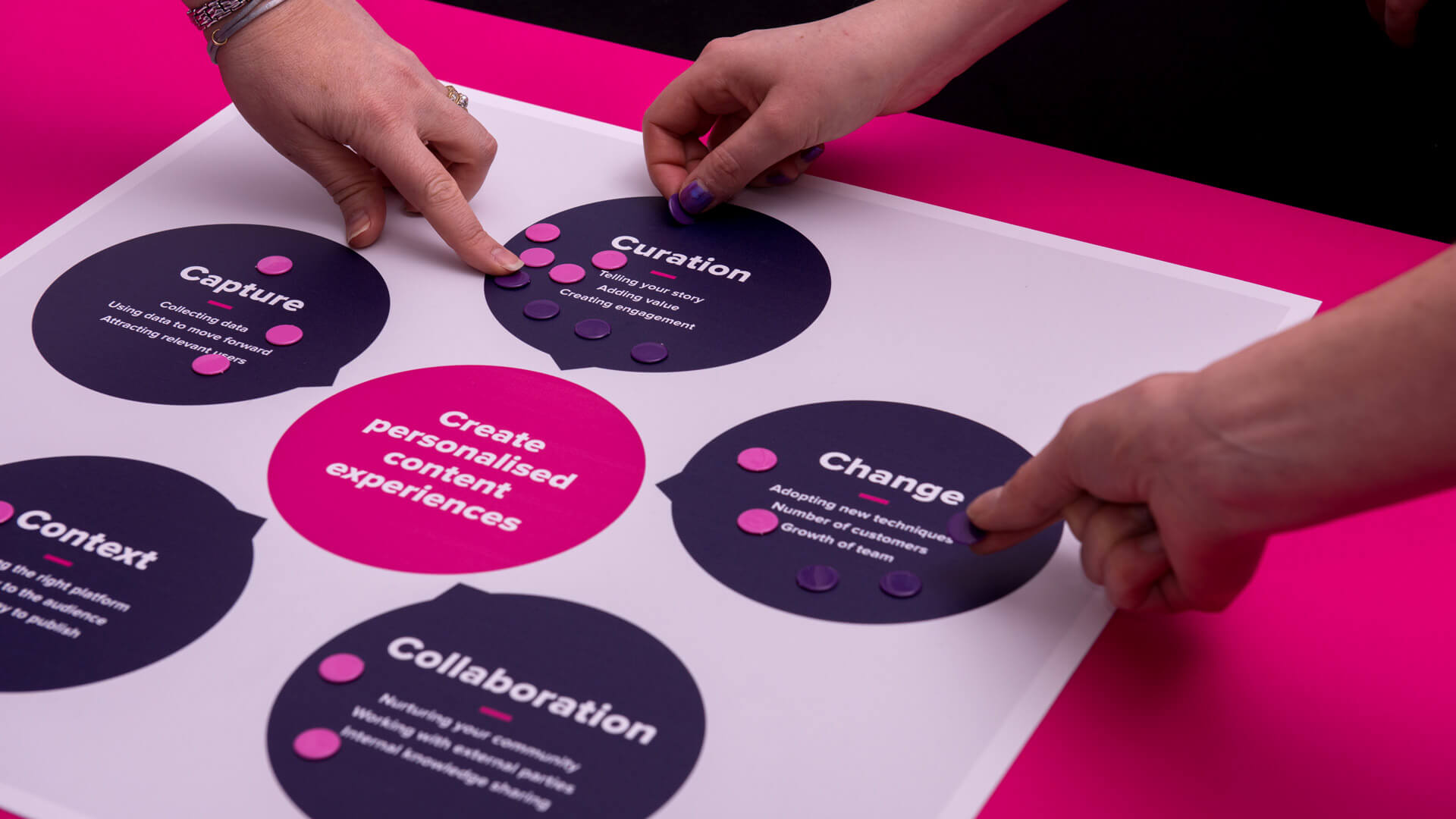
From the exercise we undertook, using a sample of 73 organisations, two-thirds of respondents were looking to focus on their Strategy and formulate a robust plan. When asked to choose, 25% were looking at building on their Identity, whilst only a handful of respondents were looking at deploying Technology as their immediate priority.
In this particular exercise, they could only choose between the three options. We would naturally expect to see Strategy as their first choice, due to organisations looking to grow and/or generate a stronger reach.
The interesting part of this exercise was when the participants were given the choice of nine further options: Content, Communication, Growth, Culture, Storytelling, Visualisation, Innovation, Experiences and Analytics.
We asked the businesses to select three out of the above nine choices. They were asked to do this within the context of their first selection in mind: Strategy, Identity or Technology.
Those that chose Strategy as their main priority went onto choose the following:
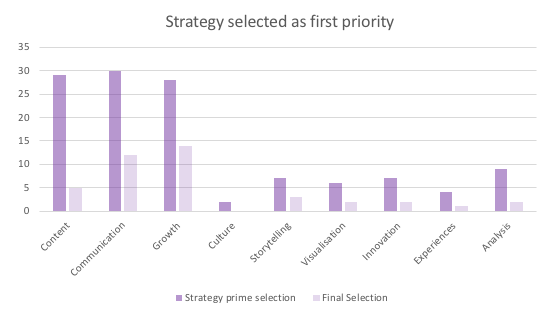
We can see a dominance towards Content, Communication and Growth. From the discussions we had during the selection process, this was due primarily to the businesses feeling pressure to explore growth and communicate with both their internal teams as well as their customers/clients.
Content featured very highly in the first choice however when it came to a final selection, we can see that it is not the main priority. Both Communication and Growth maintain a significant share.
Clearly, Growth has performed well. Although it is not the highest initial score, it is first when the final selections are made.
We concluded that Growth is the focus, with the other selections becoming elements that would help to achieve the growth.
Those that chose Identity as their main priority went onto choose the following:
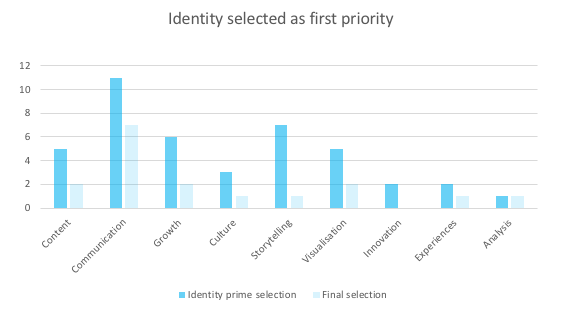
In this selection, there is a far broader spread of choices being made. Communication still ranks highly in both the initial stage and the final selection, however, the main difference in the Identity group is that Storytelling and Visualisation are also chosen a higher number of times.
Those who chose Identity appear to have more creative secondary choices. They are focussing more on the communication and narrative of their brand. Growth is still identified as one of the higher-ranking choices in the first instance, but we can clearly see a shift in thought during the final choice where Communication highly outranks other options.
Those that chose Technology as their main priority went onto choose:
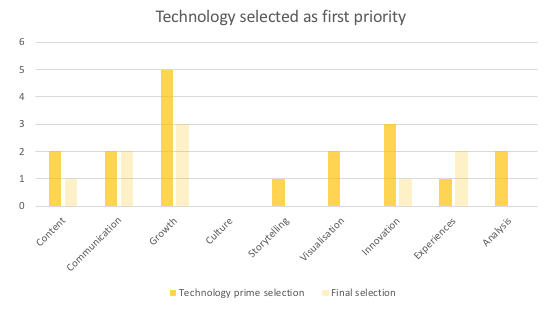
Technology appears to be very closely related to Growth and Innovation. This aligns with the common perception of technological advances being introduced that will be the ‘next big thing’ for organisations.
It was interesting to see that those who selected Technology did not see Content and Communication as important as the Strategy and Identity results. After discussion with the group, it was felt that the channels available to us were known and what they were seeking was a technological advantage in order to develop their organisation.
For the first time, we see a final choice higher than the initial selection of ‘Experiences’.
Experiences and Innovation were now seen as more relevant to the groups when looking to deploy technology.
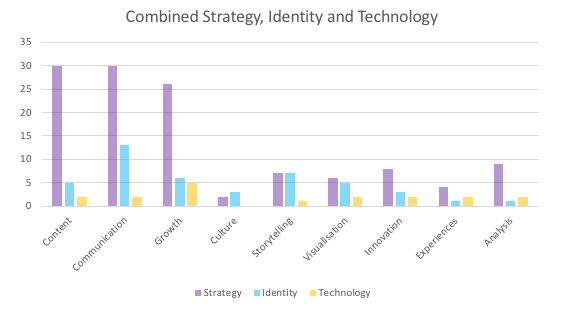
Conclusions
Effective brands are the ones with a visually strong, engaging and authentic story. Creating content is clearly a concern for organisations and carries significant importance when the participant selected strategy as their original priority.
However, the pressure is on organisations from Google, who are punishing those that are creating a low level, very broad content with their E.A.T. (Expertise, Authority, Trust) algorithm.
Therefore, it is interesting that generating content still remains a focus, rather than selecting Storytelling and Visualisation as a method to generate content. Is this because organisations are pressured into believing general content will drive traffic? Does this mean that our hunger for creating content is still there, regardless of the consequences of poor levels of engagement and site ranking?
When looking at the Growth and Communication selections, there was some comment that all the other subjects could fit within them as they are very broad titles. Certainly, you could even place Communication within Growth as well. With this as a context, you can understand why the final results are skewed towards Content, Communication and Growth.
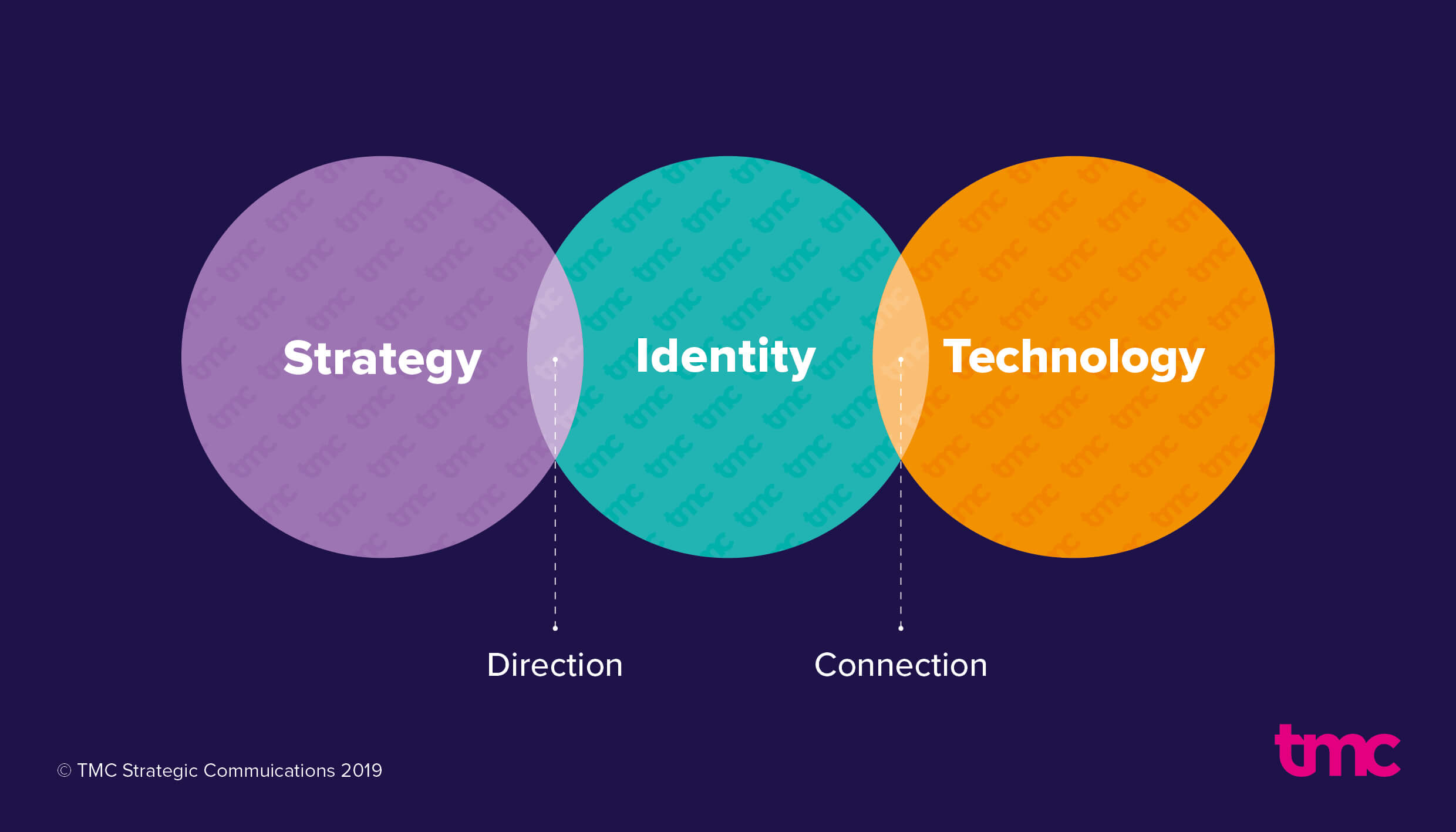
It was a surprise that Culture was not considered to be more important as part of this exercise.
We understand that Culture is a complex and essential element in business success. Building a strong and positive culture within an organisation develops trust and communication. The springboard to growth.
Moreover, we can see by the initial selections made, that the journey from Strategy leads into Identity and then into Technology. This is a natural process for organisations to take.
We explore ways to understand and help organisations improve their communication. Assisting with generating meaningful content and work with clients to identify growth opportunities that align with their marketing priorities. We do this in an efficient and engaging way, bringing teams together and delivering exceptional results along the way.
Share this
Find out more about the services we offer
and let’s work together to grow your business
Strategy
Creating market engagement.
Explore how our range of Strategic Solutions create stronger connections and actively engage your audiences.
Identity
Visually reinforcing your brand.
Discover how our Creative and Branding services enhance your Identity through compelling and arresting content.
Technology
Creative solutions & innovation.
Let us show you how we deliver intelligence led digital solutions that bring your brand to life whilst improving visibility.
